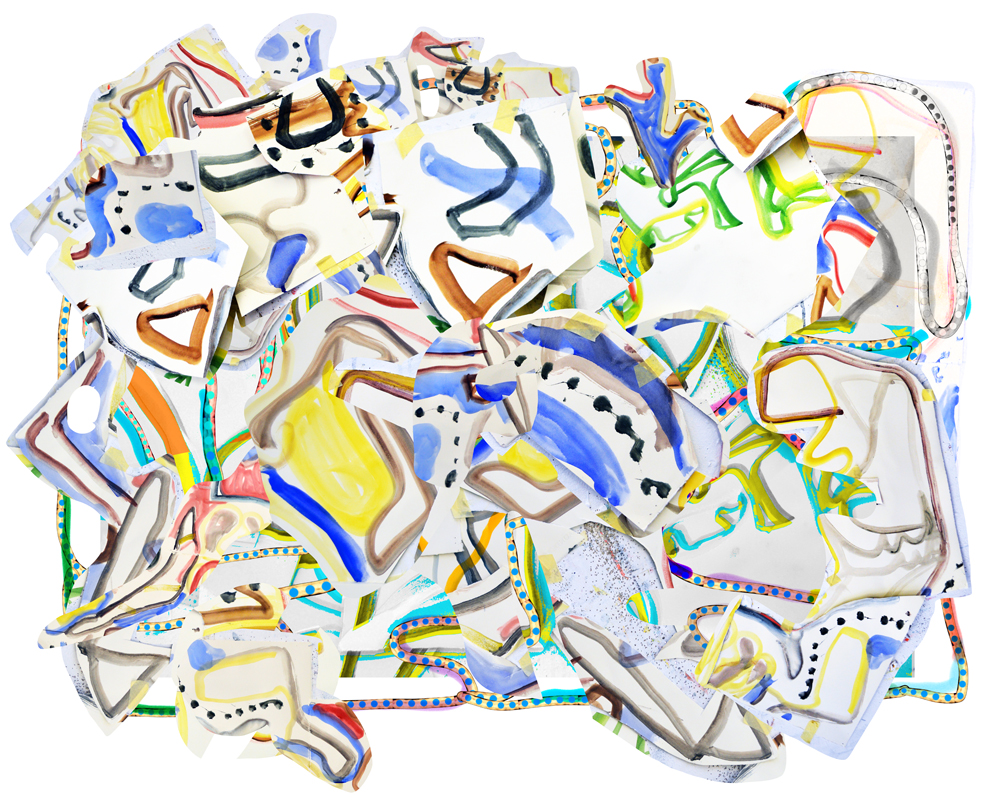Watercolour – by James Faure Walker

Watercolour painting can be a wonderful medium – luminous, relaxed, effortless washes of pink and blue. But do beautiful materials, top-grade brushes and paper, make for top-grade art? Well, if they did, life would be a lot simpler.
A whole exhibition of landscape and still-life, all carefully toned in and finely detailed, with a few self-conscious ‘abstracts’, leaves me in a quandary. I appreciate the proficiency – watercolour is not easy to control – but I miss something beyond that. Call it liveliness, adventure, or just surprise. In the wider universe of contemporary art, mere accomplishment doesn’t really register – and critics are looking elsewhere. What is it about watercolour that holds it back? Does it have to be provincial, formulaic? Am I expecting something that can’t be done?
Like other painters, I don’t use watercolour exclusively, but work across a range of methods. I also – and this is less common – make use of paint programmes. When it comes to artists’ statements, watercolourists tend to speak quite personally, a memory of a special place. Art school graduates tell you how they are positioned in the ‘discourse’, with a strategy for negotiating ‘problematic’ issues. Digital artists tell you theirs will be the art of the future.
Watercolour does look to the past for reassurance. Visitors to watercolour exhibitions write with relief in the visitors’ book – what a refuge from the noisy, pretentious, trendy art world! No technology here! I have been in museum exhibitions titled ‘contemporary watercolour’, where visitors complain that this is not what they expected. Some practitioners even speak with pride of never having been inside Tate Britain, yet alone Tate Modern. For them ‘modernism’ is a cult of ugliness. (Their objections are selective – they use iPhones, online galleries, and sell inkjet reproductions.)
An art store in Islington recently had a weekend sale, and not surprisingly, a long queue. Apparently there has been a surge of interest in this medium, and what customers were looking for was an ‘innovative’ approach. You could point out that, relatively speaking, there is plenty of such work in museums – Kandinsky, Klee a hundred years ago, Sam Francis fifty years ago to take some names at random. But as an art form it has become disconnected. Somehow we need to lift the whole genre out of its mindset. I have little idea how that could be done – but it probably involves more than new ways of splattering gouache.
In watercolour you can draw in colour, improvise one picture after another. I have used the medium more or less non-stop ever since being taught how to do washes in primary school. Yet it was the adventure of working with digital paint – even with the sixteen colours and crude pixels available in the 1980’s – that really opened my eyes. It prompted me to work recklessly, I might say wastefully. It costs nothing to try out forty different painting ideas on the computer in a morning, but a lot more if each was on the best paper – or on six-foot canvases.
Watercolour is just one technique amongst others, and whatever its unfortunate associations with cozy amateurism, in a studio none of that need get in the way. I find it useful to have a routine, to make at least one large watercolour each day, and not to worry about it. The editing comes later. I may work fast, but at other times a motif emerges and – with the help of photos and digital swapping around – switches over into a larger work. Sometimes I need to shake up the compositional staleness, introduce something I have glimpsed outside. I take advantage of the mercurial power of computer graphics. Water-based paint can’t compete: I couldn’t play with that range of contrast, collage, colour shifts, without making a complete mess. At other times, I return to the simplicity of pigment absorbed into the paper. I might think, yes, lets see what happens with the best cobalt blue, the best HP paper, and a few flicks of the brush. Usually the paint has its own ideas. If I am lucky something unexpected appears. Then I realise I have managed to let go, or so it seems; or is it all the result of the finely honed materials I bought in the art shop?

